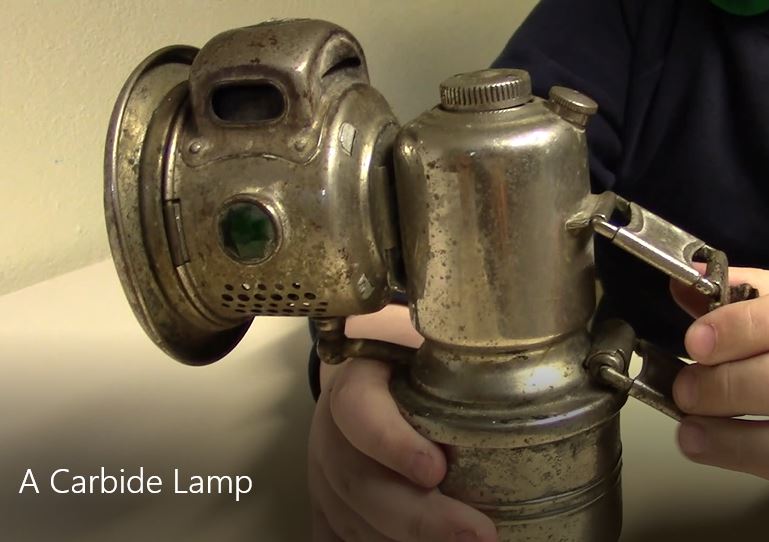Caolan brought to show the group his Great Grandfather’s Carbide Lamp which dates from 1900.
Carbide lamps are powered by the reaction of calcium carbide (CaC2) with water (H2O). This reaction produces acetylene gas (C2H2) which burns a clean, white flame. The design of the carbide lamp consists of two chambers—an upper chamber holding water and a lower chamber holding the calcium carbide. Acetylene gas is produced when water from the lamp’s upper level encounters the calcium carbide stored in the base via a dripping mechanism. The amount of water flowing into the calcium carbide container can be controlled, with more water producing more gas and a bigger flame when the lamp is lit.




